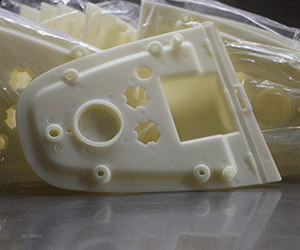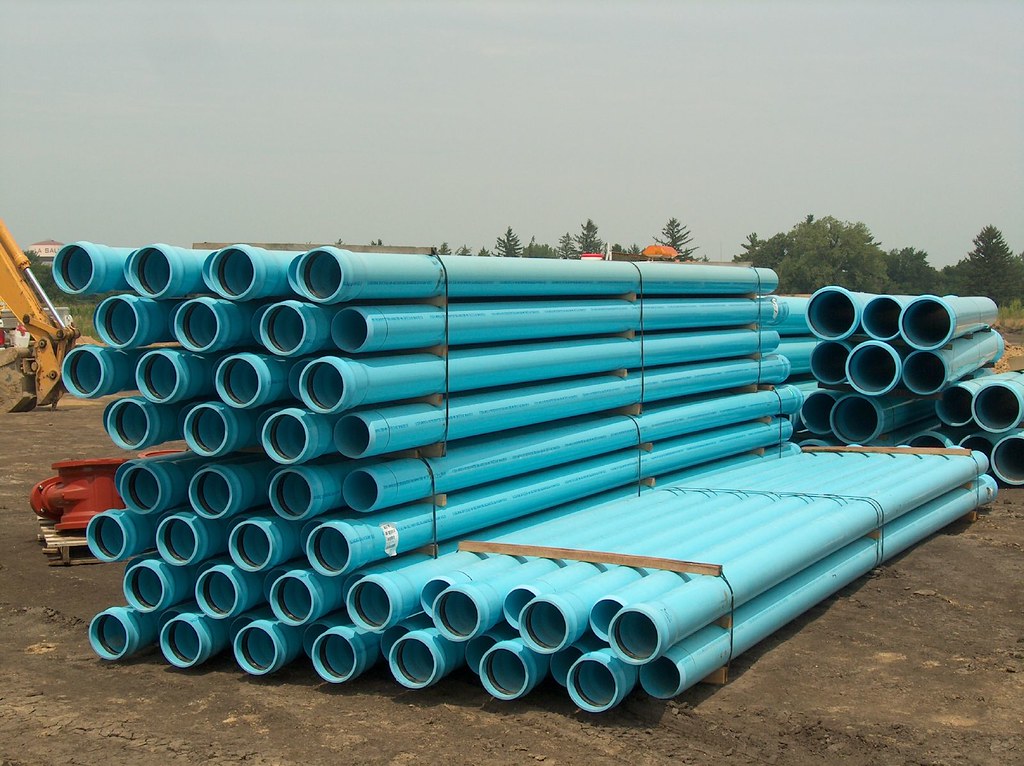Thermoformed parts are made from thermoplastics, which are plastics that can be repeatedly heated and cooled without change to their characteristics. In order to be thermoformed, these materials are produced in sheets. These plastic sheets are loaded into the thermoforming machine where they are heated to their glass transition temperature. At this point, the material becomes malleable and can be drawn over the mold.
In this article, we’ll discuss some of the most common thermoforming materials, their characteristics, and what to consider when choosing a material for your project.
 ABS
ABS
Acrylonitrile Butadiene Styrene, or ABS, is a general-purpose plastic that is widely used due to its good impact strength and rigidity. It can withstand temperatures as low as -4°F and has a heat deflection of 176°F. It is used for a variety of applications because of its resistance to scratch and abrasion that helps it maintain a high gloss finish. It also possesses good electrical insulation qualities.
Acrylic
Acrylic closely resembles glass and is often thermoformed as a cost-effective, shatterproof alternative. In addition to being impact resistant, it is lightweight and UV resistant. Any markings, such as abrasions, are easily fixable without damage to its excellent clarity. It is important to note that while acrylic is easy to thermoform, modifications must be made to the material before thermoforming can begin.
PET
Polyethylene Terephthalate, or PET, is a lightweight, moisture-resistant, and recyclable plastic used primarily for packaging. It has excellent clarity and durability and has a glass transition temperature of 158°F. While it is a popular material, thermoformed PET needs to be dried in post-processing to reach such superb resistance. It can also be difficult to produce a clean trim due to this material’s toughness, and more wear and tear will occur to dies used on PET than other materials.

Polycarbonate
Polycarbonate is best known for making bulletproof glass, meaning this material can take a lot of abuse. As such, it is used for high stress applications where durability and impact resistance are necessities. It may also be used in high heat environments as it has a heat deflection temperature of 284°F.
Polyethylene
Polyethylene boasts excellent fatigue and wear resistance that makes it useful in packaging. It is also resistant to chemicals, moisture, impact, and abrasion. The most recognizable polyethylene thermoforming grades are LDPE (Low-Density Polyethylene) and HDPE (High-Density Polyethylene).
Polypropylene
Polypropylene is a fatigue-resistant commodity plastic used for electric, automotive, and consumer goods. It is often used in thermoforming to make larger pieces while remaining cost-effective. In addition to being chemical resistant, it possesses low water absorption and low conductivity. Some grades of polypropylene are safe for food contact, making it a useful material for containers as well.
Polystyrene
Polystyrene is a popular brittle clear plastic that is widely used for disposable and protective packaging applications. It is low-cost and easy to thermoform, which makes this material perfect for beginners. The most notable grade of polystyrene used for thermoforming is HIPS (High Impact Polystyrene).
 PVC
PVC
Polyvinyl Chloride, or PVC, is known for being a high quality insulator as it is most notably used in electrical housings and plumbing. It offers great resistance to chemicals, water, corrosion, and abrasion. Additionally, it is flame resistant and has a glass transition temperature of 170°F. While normally rigid, it may have additives blended in to change its stiffness as needed.
TPO
Thermoplastic Polyolefin, or TPO, is a durable material commonly used as a fiberglass alternative. Due to its chemical resistance, UV resistance, and capability to withstand extreme temperatures, this material can be used for both indoor and outdoor applications.
Choosing the Right Material
With such a wide variety of materials available for thermoforming, it can be difficult to know which one to select for your design. However, there are two major factors that will help inform your decision: intended purpose and cost. Your part’s intended application should always be considered first so that you can choose a material based on what mechanical properties you require, such as strength, high heat resistance, and more. This may also include considering how you want your part to look and feel. In terms of cost, you may need to keep in mind that the cost of material depends on its processing temperature and ease of manufacture. Your budget may help you decide between two similar materials.
Thermoforming at 3 Space
Here at 3 Space, we offer thermoforming services to suit your every need. If you have questions regarding which material may be best suited for your part, our expert engineers will be happy to make suggestions based on your design. Also, ask us about the benefits of 3D printing your thermoforming mold. For more information, contact us today.
